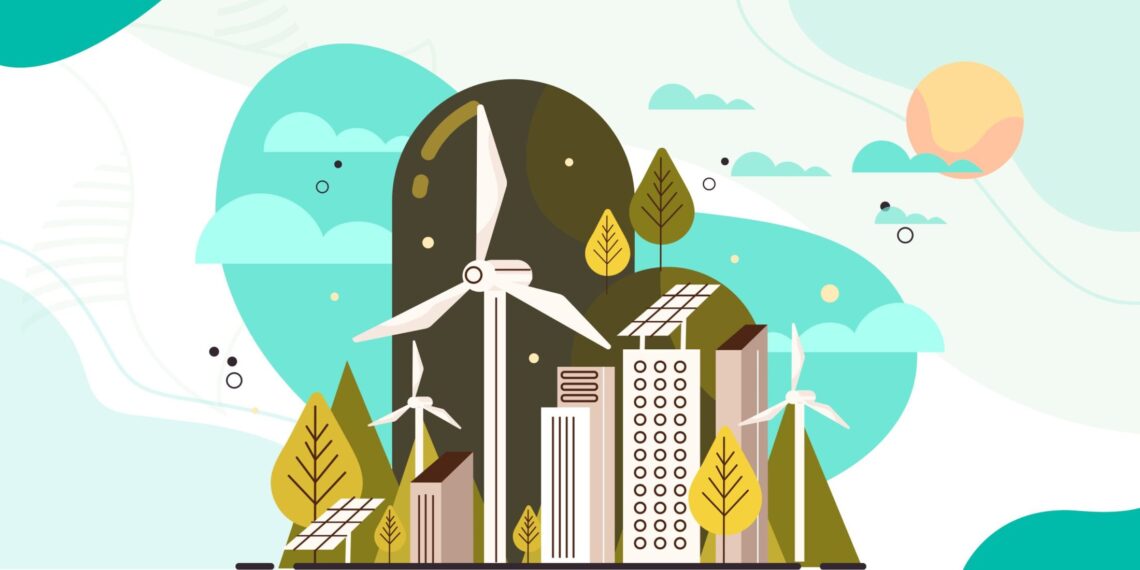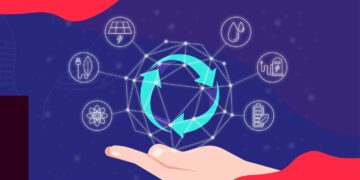Table of Contents
The Earth’s average surface temperature has increased due to the amount of greenhouse gas (GHG) released in the atmosphere caused by human activities. While it’s not yet possible to be 100% sustainable, being net zero means we are conscious of our actions and making efforts to minimize our environmental impact.
The transition towards becoming net zero is our most potent tool against the climate crisis. This solution not only benefits the environment but also has economic, social, and health advantages. By tracking the climate crisis, we can protect human health while driving innovation and economic growth.
01
of 07
What is Net Zero?
Net Zero refers to a state in which the greenhouse gases going into the atmosphere are balanced by removal out of the atmosphere.
The term net zero is important because – for CO2 at least – this is the state at which global warming stops. The Paris Agreement underlines the need for net zero. It requires states to ‘achieve a balance between anthropogenic emissions by sources and removals by sinks of greenhouse gases in the second half of this century’.
Net zero is crucial because it’s not easy to bring down all emissions to zero within the required timeframe. To make net zero work effectively, we must ensure it’s long-lasting. This means that once we’ve removed greenhouse gases, we need to ensure they don’t reintroduce into the atmosphere over time, like through the destruction of forests or improper carbon storage. Here’s how Salesforce is achieving net zero:
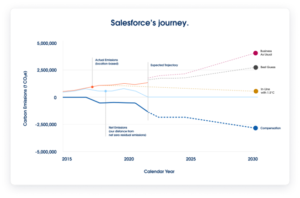
02
of 07
Net Zero is the future of sustainability
The truth is that achieving sustainability begins with a conscientious understanding of the impact our activities have on the atmosphere. It involves acknowledging the role each company plays in contributing to greenhouse gas emissions and taking responsibility for those consequences. This awareness becomes the cornerstone for implementing effective strategies to mitigate and offset the environmental footprint.
A practical approach to sustainability involves not just minimizing emissions but also compensating for unavoidable ones. Companies can engage in Corporate Social Responsibility (CSR) activities directly related to the planet. By participating in initiatives like reforestation projects, businesses can actively contribute to offsetting their carbon footprint. Stellaxius is dedicated to the Pledge 1% movement in which we serve 1% of our yearly time to volunteering, planet activities, and serving our community, which is part of our commitment to the world.

An effective and widely adopted method for offsetting emissions is through the investment in carbon credits, for example. This involves supporting projects that reduce or capture greenhouse gas emissions. For instance, companies can invest in projects such as tree-planting initiatives, which not only absorb carbon dioxide but also contribute to biodiversity. Financial support for the workforce involved in such projects ensures that the benefits extend beyond environmental impact to societal and economic improvements.
03
of 07
Challenges companies face to achieve Net Zero
In the journey towards achieving Net Zero, businesses will face challenges across various industries. The first and foremost challenge revolves around identifying and understanding the emissions produced by their activities and the sources of these emissions. Before becoming Net Zero, companies must gain clarity on the emissions they generate and the avenues through which these emissions enter the environment.
A crucial initial step involves answering questions such as: How extensive are our emissions? What are the primary sources contributing to our carbon footprint? To become Net Zero, a company needs to not only acknowledge its emissions but also determine their magnitude. This introspection is vital for understanding the gap that needs to be bridged to achieve a state of Net Zero. Here are four top challenges that you may face when becoming Net Zero:
1. Identifying emissions
- The primary challenge lies in recognizing and understanding the emissions generated by business activities and gaining clarity on the sources of emissions before striving towards a Net Zero state.
2. Quantifying emissions
- Determining the extent of emissions and understanding the magnitude of the carbon footprint is crucial. Businesses must assess how far they are from achieving Net Zero and quantify the emissions they must compensate for. If you want to know more about measuring your carbon footprint, you should definitely follow up on our Carbon Footprint: Tracking and Measuring Your Impact article.
3. Emission sources and calculation
- Companies must calculate emissions accurately, considering transportation, production, and distribution factors. Take our example, as a Salesforce Partner Consulting Boutique, we consider specially business travels and employee commuting.
4. Strategic commitment
- Achieving Net Zero demands a deep commitment to understanding, measuring, and mitigating emissions throughout the value chain. Businesses need a strategic and holistic approach to navigate the complexities of the journey towards Net Zero.
04
of 07
How Salesforce Net Zero Cloud can help
Even with normal challenges that always come with a digital transformation, Salesforce Net Zero Cloud is still a powerful tool that will help accelerate organizations’ journey towards sustainability. Here’s how it can make a significant impact:
1. Carbon emissions tracking
- The platform provides a detailed view of carbon emissions across the entire value chain. Through robust data tracking and analytics, organizations can identify and address emissions hotspots. You can go through our ARTICLE to learn more about carbon emission tracking on Net Zero Cloud.
2. Real-time insights and reporting
- Net Zero Cloud offers real-time data on environmental impact, enabling informed decisions. Businesses can optimize sustainability efforts and generate customizable reports with out-of-the-box reporting, showcasing transparency and accountability.
3. Integration with renewable energy
- Salesforce, having achieved 100% renewable energy, extends this commitment to customers. Integration with renewable sources allows organizations to make greener energy choices, reducing their carbon footprint.
4. Scalability and flexibility
- Designed to scale with organizations, the platform adapts to evolving needs. Its flexibility allows customization of sustainability strategies, ensuring businesses of all sizes benefit.
5. Collaboration and engagement
- Sustainability requires teamwork. Net Zero Cloud provides a platform for stakeholders to collaborate, exchange data, and work together on initiatives, promoting a collective approach to reducing emissions.
6. Goal setting and progress tracking
- The platform equips businesses with the resources to set precise, quantifiable sustainability targets and monitor progress towards becoming carbon neutral or achieving net-zero emissions.
05
of 07
How Net Zero Cloud fits into Salesforce’s sustainability strategy
At Salesforce, it is believed that net zero is a continuous journey, requiring us all to:
- Commit publicly to the shared, global goal of achieving a just and equitable transition to net zero emissions, in line with a 1.5°C future
- Prioritize reducing emissions as quickly as possible and aligning full value chains (Scope 1, 2, and 3) to the global trajectory of ~50% emissions reduction by 2030 and 90% emissions reduction by 2040
- Compensate for any remaining emissions by purchasing renewable energy and carbon credits of high credibility, impact, and co-benefits, in the long term using removal credits only and in the near term using a combination of avoidance and removal credits
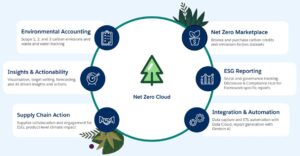
If you’re in a company that wants to get started with ESG and already uses Salesforce, Net Zero Cloud could be your way to start! If you already have measures such as seeking equality, ESG, legal, finance, environment, and environmental targets, Salesforce Net Zero Cloud is a tool that will help you detail all the information and a basis for analysis, allowing us to draw metrics to understand whether the strategies are being achieved.
06
of 07
The 3 Scopes of Emissions
To truly comprehend and address their carbon footprint, companies need to dissect their emissions sources. The Greenhouse Gas Protocol categorizes greenhouse gas emissions into three scopes. Understanding the nuances of Scope 1, 2, and 3 emissions is essential for organizations, and Net Zero Cloud facilitates this exploration, offering valuable insights to pinpoint opportunities for reduction.
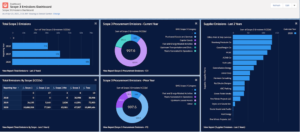
Scope 3 emissions in Salesforce Net Zero Cloud are captured and visualized within the same platform that currently calculates scope 1 emissions (the direct emissions from owned and operated assets), and scope 2 emissions (those associated with the purchase of electricity, heat, or cooling for a company’s own use). This provides a single source of truth for emissions data. Now, let’s differentiate between scope 1, 2, and emissions.
-
Scope 1 – Emissions from sources controlled/owned by an organization
- Onsite natural gas combustion in owned buildings
- Other direct fuel usage from generators and heating oil
- Leakage of refrigerants from owned buildings
- Corporate private jet travel
- Fuel usage for corporate shuttles
-
Scope 2 – Emissions associated with purchased electricity consumed by the organization
- Electricity use in offices and warehouses
- Natural gas use at leased facilities
- Generator fuel use at leased facilities
- Stream use at leased facilities
- Leaked refrigerants at leased facilities
-
Scope 3 – Emissions that occur in the value chain, but not controlled/owned by the organization
-
Upstream activities:
- Purchased goods and services
- Capital goods
- Fuel and energy-related activities
- Upstream transportation and distribution
- Waste generated in operations
- Business travel
- Employee commuting
- Upstream leased assets
-
Downstream categories:
- Downstream transportation and distribution
- Processing of sold products
- Use of sold products
- End-of-life treatment of sold products
- Downstream leased assets
- Franchises
- Investments
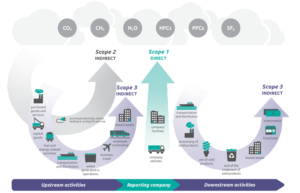
07
of 07
How Stellaxius is using Salesforce Net Zero Cloud
As a Salesforce Partner, we’ve adopted the Net Zero Cloud to manage and track our emissions. This helps us identify the sources that can be reduced, evaluate how social responsibility events contribute to compensating them, measure the distance from net zero residual emissions, and investigate and choose carbon credit projects to invest in.
At Stellaxius, our expertise lies in preparing crucial questions that guarantee a seamless alignment between your roadmap and the implementation of Net Zero Cloud. This process includes a thorough evaluation of Salesforce’s capabilities tailored to your company’s unique context. So, if you feel ready to embark with us, contact us today to start your integration or find out more about our services on Net Zero Cloud.


